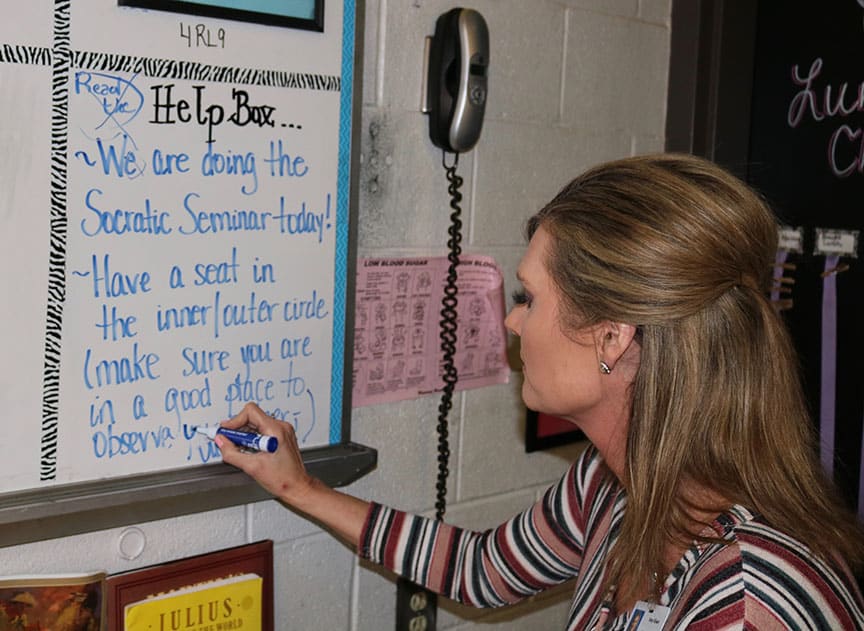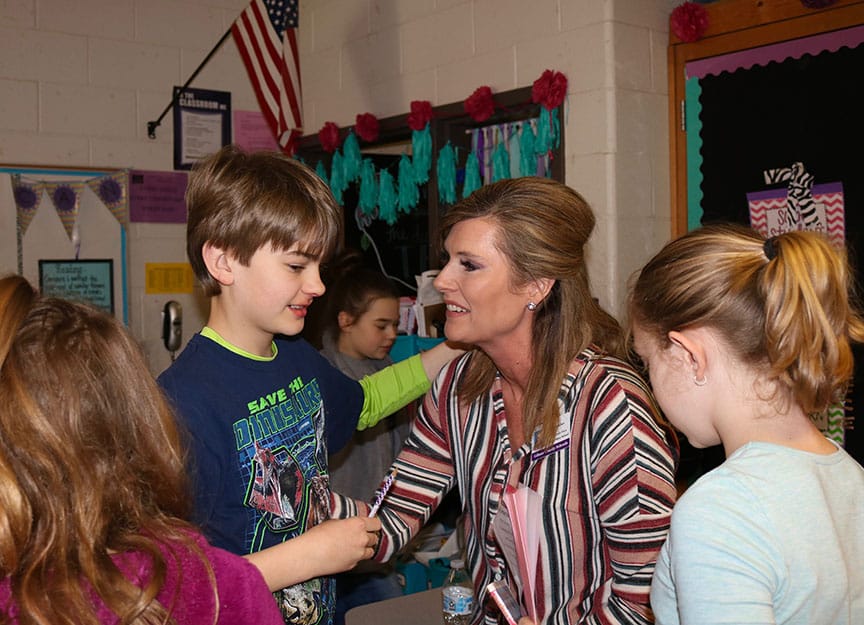Teacher SEE-KS to Make a World of Difference
Increasing Literacy and Engagement in the Classroom
By Krystin Dean
When it comes to professional development, veteran educator Amy Kiser has seen it all. When she joined the SEE-KS (Social Emotional Engagement—Knowledge and Skills) core team at Mountain View Elementary School in Gilmer County, Kiser went to the training expecting business as usual. She left with a changed philosophy on teaching.
“So many times, teachers are told to just do this, do that. I love SEE-KS because they told us why,” said Kiser. “It was eye-opening as a teacher—and as a mother.”
Research shows that one out of seven children ages 2 – 8 have at least one diagnosed mental, behavioral, or developmental disability. At least 10 percent of children birth through 5 experience significant social-emotional problems that negatively impact functioning, development, and school readiness.
Emily Rubin, director of Marcus Autism Center’s Educational Outreach Program, and her colleagues co-developed SEE-KS. They studied neuroscience to find ways to increase social- emotional engagement of autistic children—but quickly realized the strategies could foster positive learning climates for all children.
“It’s one of the only approaches I can remember in all my years of teaching that’s been so successful and so easy. It makes my life easier instead of harder,” said Kiser, who credited small changes—like integrating flexible seating and a help box on the chalkboard—with big results.

A 2.4 rating on the SEE-KS Student Engagement Ladder (on a 0 – 4 scale) signifies where engagement impacts academic achievement. Classrooms using SEE-KS in Gilmer moved from “partially engaged” (2) in Fall 2017 to “mostly engaged” (3) in Spring 2018.
“Our teachers were working hard and so were the kids—but some of our test scores may not be showing that,” said Kiser. “SEE-KS is definitely something we needed. That student engagement makes a world of difference.”
Training is provided to district and school personnel so that sustainable leadership and coaching teams are formed—a model that enables school systems to develop internal capacity for serving children with developmental disabilities. Coaches use an appreciative inquiry approach focused on what’s working in the classroom and what comes next.
“SEE-KS empowers teachers to hone their craft,” said Rubin. “They develop their own sense of self-efficacy to reach all their students: How do I increase my effectiveness? And how do I do so by collaborating with colleagues in a safe environment where I’m appreciated and asked to find opportunities to increase engagement?”
Engagement strategies are tailored to the developmental stages of children who are not yet verbal, beginning to use language, and have reached a conversational stage of discourse.
“Reading is a form of high-level social communication,” said Rubin. “We read to hear what others have to say. We write to share our thoughts with others. It’s all about social interaction. If we fuel children’s love of people and social engagement, we fuel their interest in learning.”
Kiser said her students are more independent and emotionally invested in what they’re doing. They love to tell her about the books they have selected and often ask for a few more minutes curled up on the rug or sofa during independent reading time.
“Students used to listen to lessons and work quietly at their desks. I thought that was the hallmark of a great teacher,” she said. “But now the classroom is filled with movement, interactions, and excitement. Parents say their kids love the class, and those with kids who have hyperactivity issues say they’ve noticed a big difference.”

The full impact of SEE-KS became evident to Kiser when a new student joined her class and all of the other students instantly began coaching him.
“It was funny to see the kids almost being like little teachers telling the new student how things work because they know the procedures so well,” she said. “That was definitely my biggest aha moment—a kid teaching another kid.”
SEE-KS is in 26 school districts in Georgia, including Pre-K and Head Start classrooms.
“This is largely thanks to grants that allow schools like Mountain View to become completely sustainable in using SEE-KS,” said Rubin. “They will use this tool and framework for years to come because of philanthropists who said, ‘I want to help that region.’ ”
Rubin’s team is collaborating with the University of West Georgia to incorporate SEE-KS into their pre-service certification program for teachers and speech and language therapists.
“We’re building multi-tiered systems of support to foster increased literacy and engagement in the classroom—from early childhood all the way through high school,” said Rubin. “Our hope is that SEE-KS become a scalable approach that’s accessible to all 181 school systems in Georgia.”

